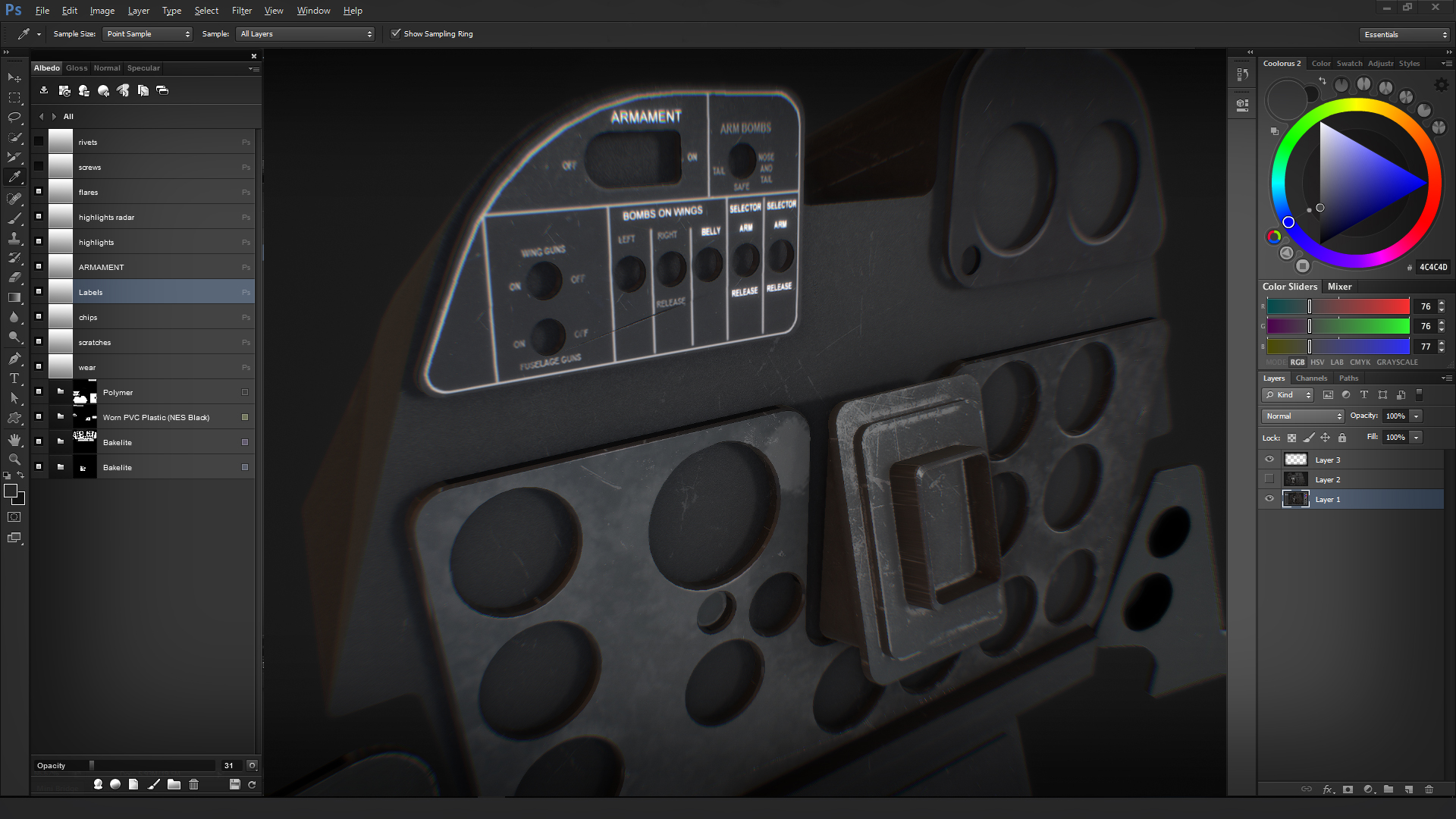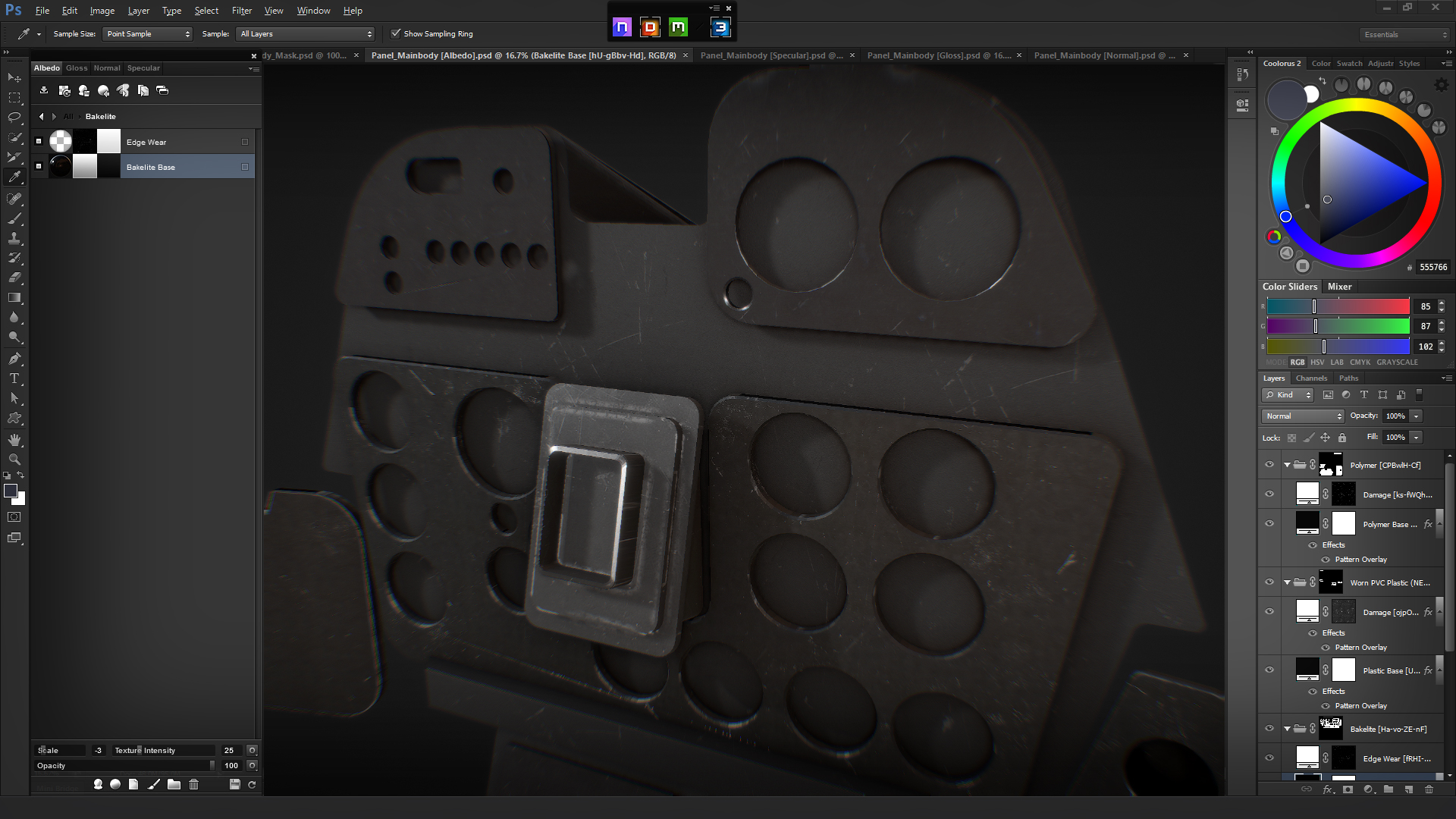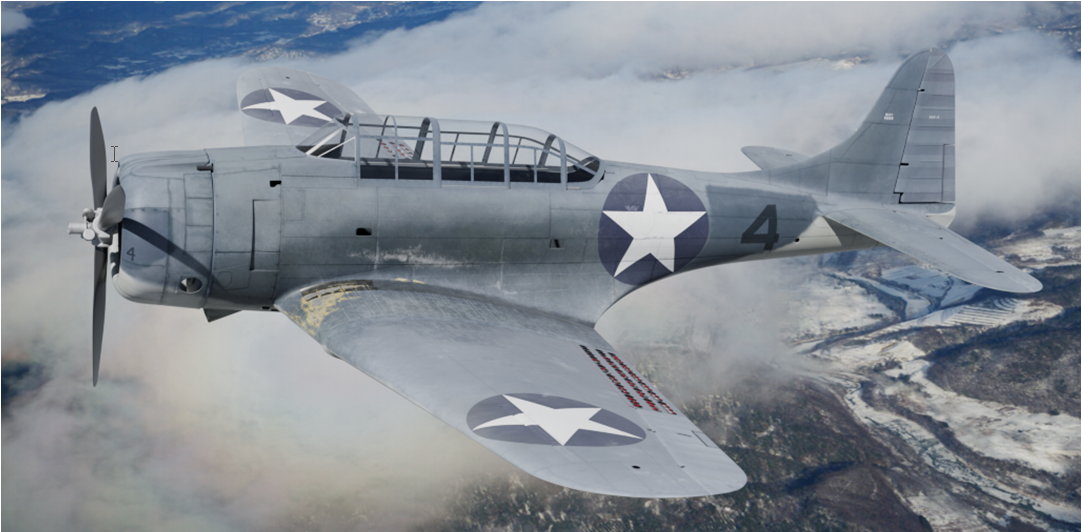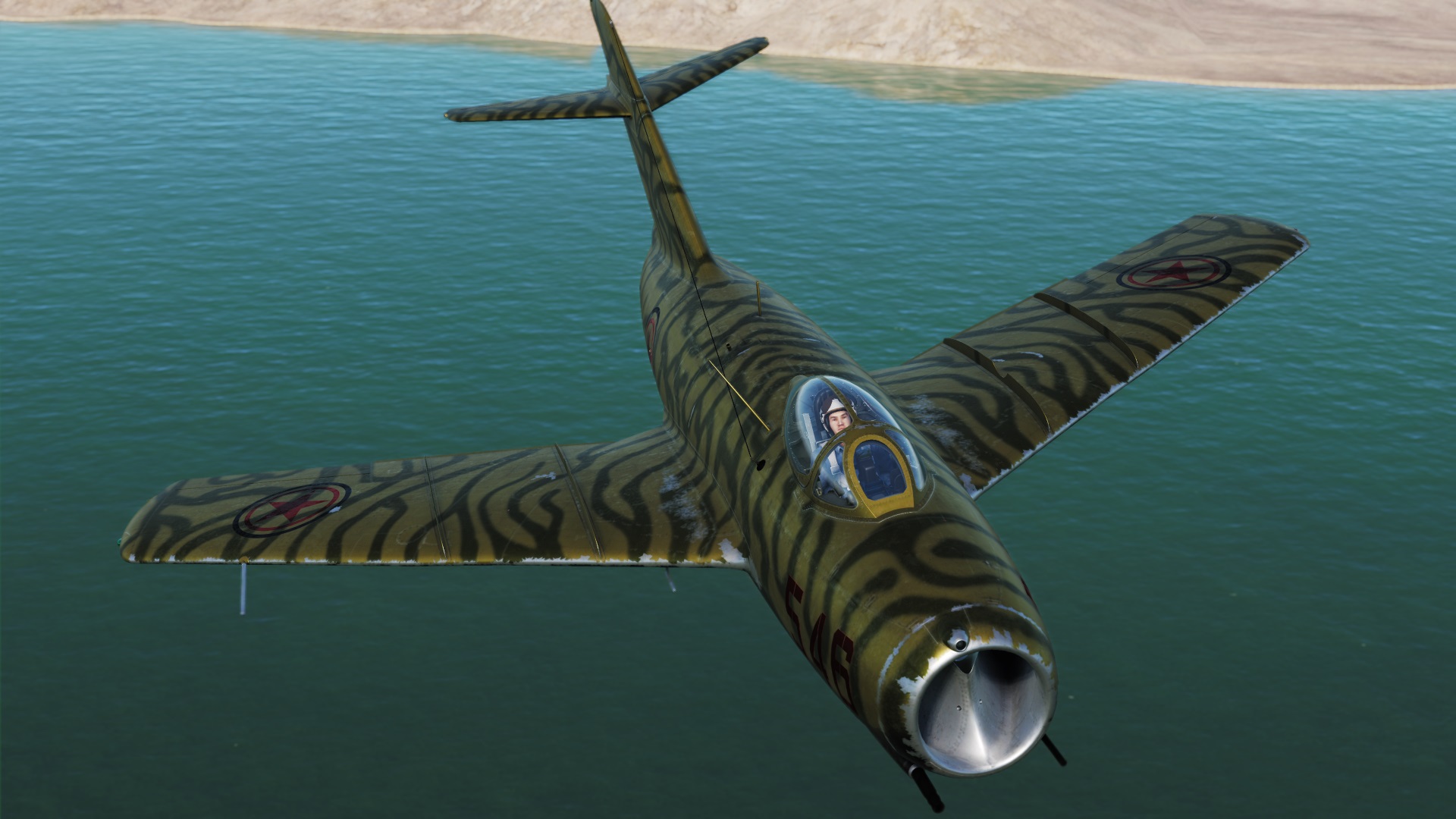can you give a complete (short) list for converting PBR to FSX/P3D?The biggest difference between PBR and the Current FSX/P3D way of painting is that the diffuse map which is called an Albedo map should contain NO shadows or highlights. So if you have AO (baked shadows) layers those would be merged into the RED channel of the Materials textures. The other major difference is that RGB color hue and brightness are also used to key lighting and shadow in the sim. There's a great tutorial for painters here:
WAR THUNDER SDK FOR PAINTERS
I want to try it. maybe on Osprey
many thanks










